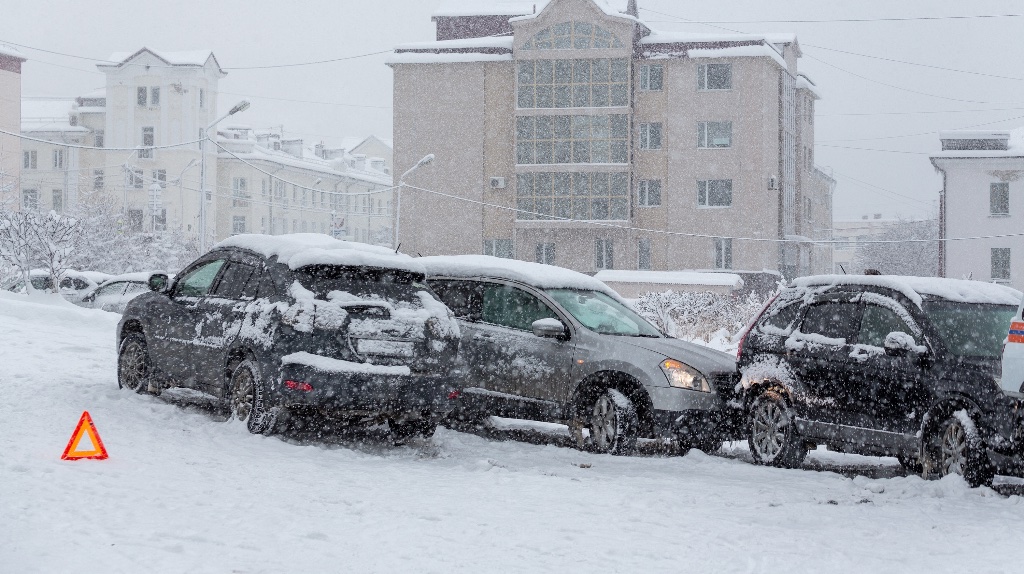
Driving in adverse weather conditions like rain, fog, smog, sleet, ice, or snow can make traveling through Philadelphia more challenging for motorists. The weather contributes to a notable percentage of motor vehicle crashes in Pennsylvania, as adverse weather can impair driver visibility and increase the risk of loss of vehicle control due to road conditions.
Weather-Related Car Accident Statistics
According to the Pennsylvania Department of Transportation, most traffic accidents occur under ideal weather conditions. In one recent year, 77.6 percent of all crashes and 80.2 percent of fatal crashes occurred during ideal weather conditions. However, adverse weather conditions can cause or contribute to motor vehicle accidents by reducing visibility and making road surfaces slippery. PennDOT reports that 13.1 percent of all crashes and 9.8 percent of fatal crashes occurred during rain or rain/fog, 2.8 percent of all crashes and 2.2 percent of fatal crashes occurred in snow/sleet/freezing rain, 0.7 percent of all crashes and 1.3 percent of fatal crashes occurred in smog, and 5.8 percent of all crashes and 6.5 percent of fatal crashes occurred in other adverse weather conditions. In addition, 17.7 percent of all motor vehicle crashes and 15.1 percent of fatal accidents occurred on wet road surfaces. One-and-a-half percent of crashes and 0.8 percent of fatal accidents occurred on snow/slush-covered roads. Nine-tenths of crashes and half a percent of fatal crashes occurred on icy roads.
Effects of Specific Weather Conditions on Car Accidents
Various adverse weather conditions can affect driver safety and increase the risks of a motor vehicle crash due to motorist negligence. For example, rain and fog can significantly reduce driver visibility, leaving drivers less time to react to emergencies, such as slowing or stopped traffic ahead or an obstacle in the road. Rain can also make road surfaces slick, especially on city streets where rainwater can bring motor oils that leak from vehicles to the surface. Standing rainwater or slick streets will adversely affect vehicles’ braking performance, potentially leading to accidents if drivers do not adjust their driving behavior during precipitation by slowing down and increasing following distances.
Snow and ice can also make driving more difficult for motorists. Snow and ice can make road surfaces slippery, meaning vehicles need increased braking distances to slow down and stop safely. Snow and ice may also increase the risk of drivers losing control in a skid, especially when driving at high speeds or up/down steep inclines. Heavy snow or sleet can also reduce visibility or obstruct drivers’ view by sticking to windshields, door windows, and side mirrors.
Preventative Measures and Safety Tips
Although drivers can avoid the risks of driving in adverse weather conditions by waiting until conditions improve to get on the road, drivers who must travel during adverse weather can best protect themselves by following safety tips, such as:
- Reduce speed during adverse weather conditions, driving slower than the posted speed limit as necessary. Slower speeds will give drivers more time to react to emergencies and make it easier to brake.
- Maintain safe following distances based on weather conditions, increasing distances as necessary due to reduced visibility or slick road surfaces.
- Follow all recommended vehicle maintenance, including changing summer tires for winter tires, ensuring tires have sufficient tread depth, replacing windshield wipers regularly, and keeping the wiper fluid reservoir filled.
Contact a Car Accident Lawyer Today
When you’ve suffered injuries in a car crash in Philadelphia that occurred during adverse weather conditions, you deserve to seek financial recovery for your medical bills, car repairs, and lost income. Contact the Law Office of Jason Javie today for a free consultation with a dedicated car accident attorney to discuss your options for pursuing compensation after a weather-related traffic crash.
